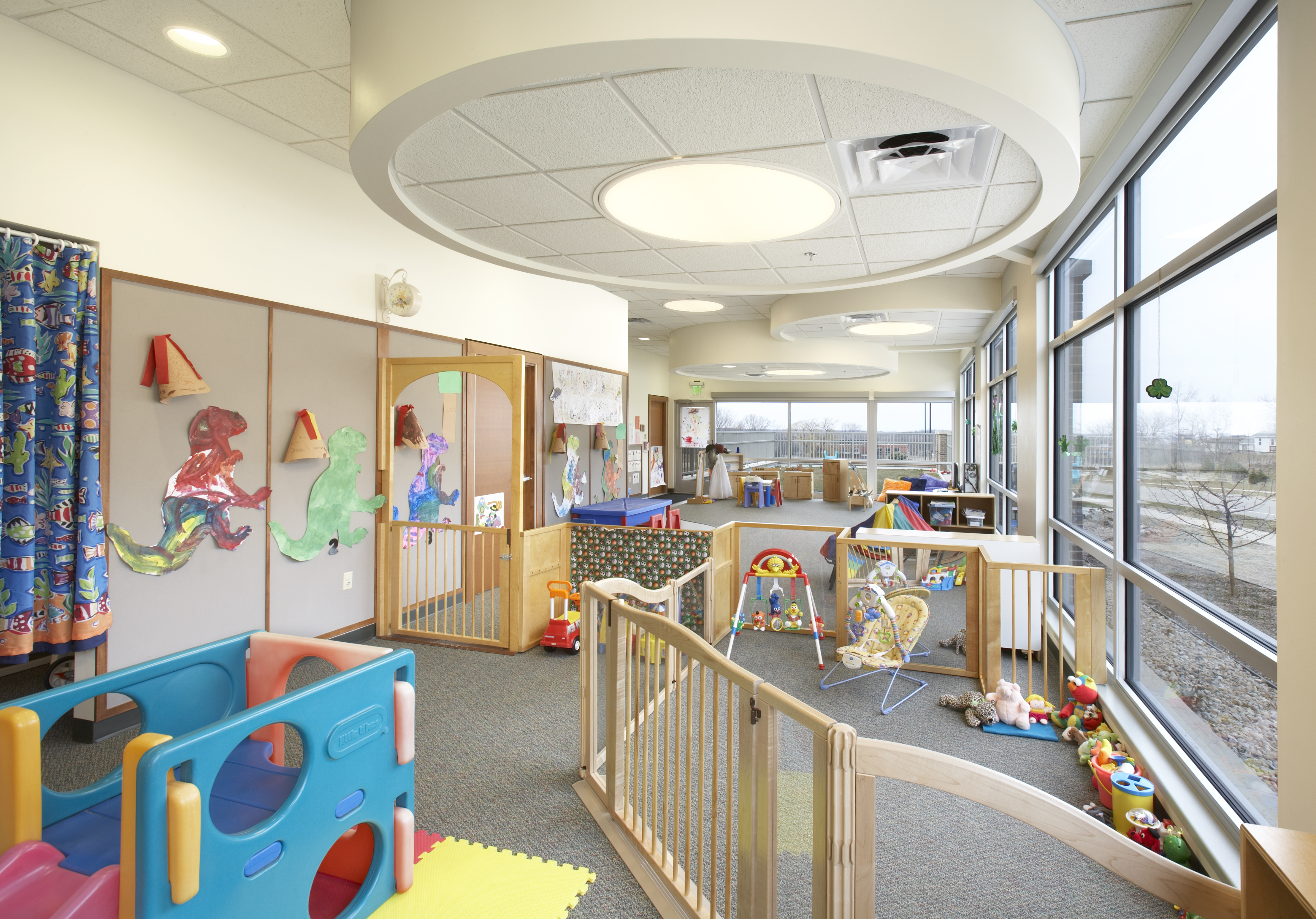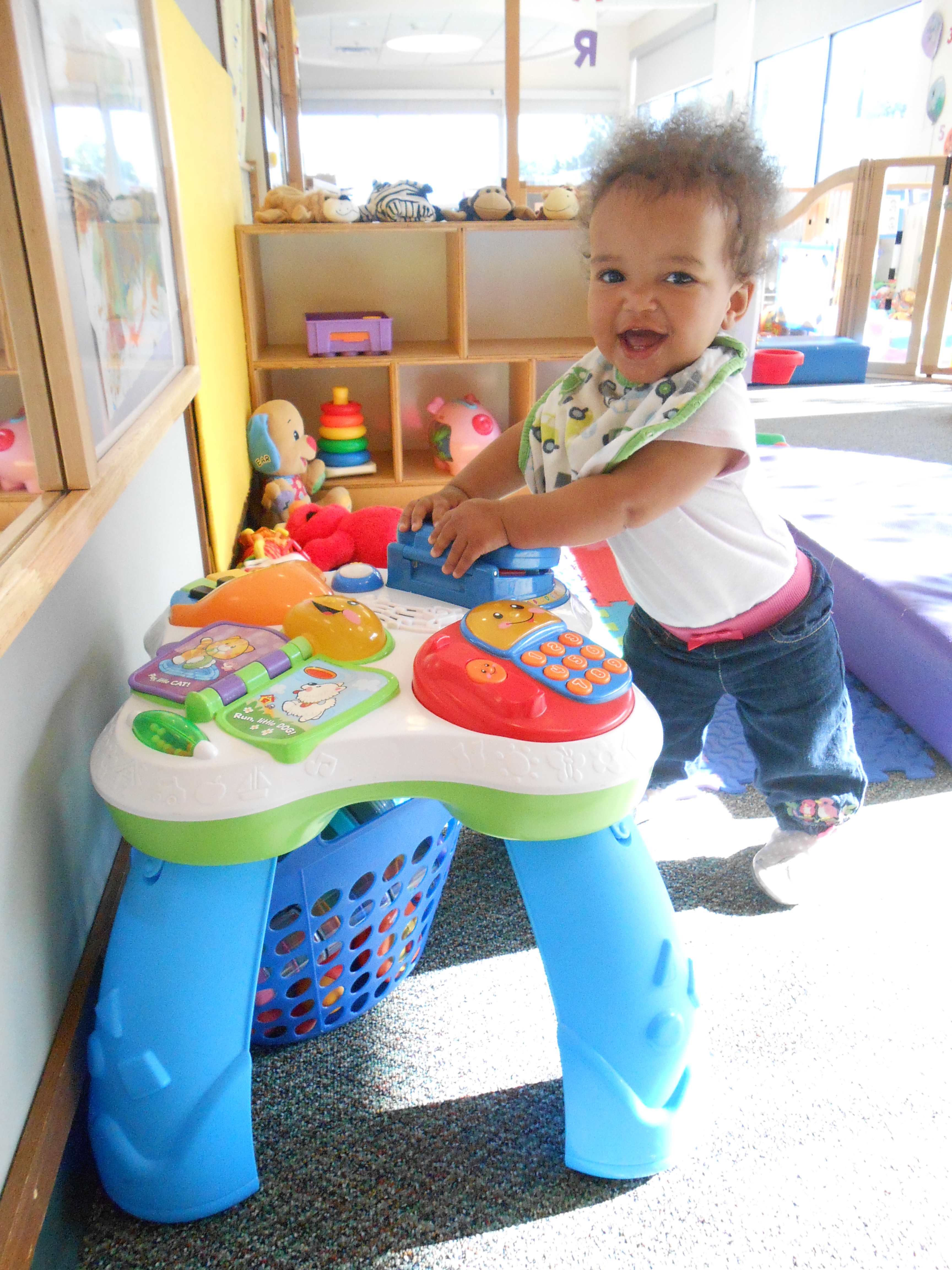How Tri-North Supports Employees with Young Children


It’s not news that the cost of early childcare in the United States is incredibly high. According to Care.com, the national average for in-center care is around $10,000 annually. Here in Wisconsin, we’re well above the national average. And in Dane County where our headquarters is located, it’s totally normal for parents of a child under age two to pay at least $60 a day, or over $15,000 per year just for one child’s care.
It’s no wonder that many folks with one or more kids face the tough decision of whether or not to even return back to work after they have children. For parents, the question is: how much of my net salary after taxes will go toward child care? Sadly, the answer often is a resounding “most of it!” The impact on families, and often women in particular is obvious, and this situation also impacts businesses in major ways. On the business end of the equation, an incredibly important question is: how do we recruit and maintain the skilled talent we need to best serve our clients and to stay ahead of our competition
Rising to the Challenge
 So, what can employers do to retain top-notch employees in an environment that makes it nearly impossible financially and logistically for parents to return to work while their kids are in childcare centers.
So, what can employers do to retain top-notch employees in an environment that makes it nearly impossible financially and logistically for parents to return to work while their kids are in childcare centers.
For starters, at a minimum, employers can offer flexibility, remote work options, predictable schedules, flexible spending accounts for dependent care, and basic respect for the realities of employee’s family needs. At Tri-North, we offer all of these things as much as possible. I recently had the honor of joining an amazing group of speakers discussing how business and early care providers are creating partnerships, and the unique way that we at Tri-North support employees with young children.
On-Site Care

Twenty years ago, in 1997, we opened Little Builders Day School, which is our onsite childcare center, located within our corporate headquarters here in Madison. It is open to all employees, including field staff. When we don’t reach capacity with employee children, we open the daycare up to outside families, typically families that have some tie to Tri-North.
 We have four state-certified teachers on staff and a 16-student capacity. We take children ages six weeks to six years. It’s a bit of a cooperative in that the parents participate in purchasing groceries for the classroom on a regular basis, but it largely functions just as any other childcare center, with one key difference. Because we opened this daycare to be a benefit to our employees, we don’t operate it as a profit center. Instead, we essentially subsidize the cost of childcare for our employees.
We have four state-certified teachers on staff and a 16-student capacity. We take children ages six weeks to six years. It’s a bit of a cooperative in that the parents participate in purchasing groceries for the classroom on a regular basis, but it largely functions just as any other childcare center, with one key difference. Because we opened this daycare to be a benefit to our employees, we don’t operate it as a profit center. Instead, we essentially subsidize the cost of childcare for our employees.
Based on my research of other private, our employees currently pay about half (or less) of most licensed care centers in our area. If you assume our average employee child will leave our center at age 5, we estimate our employees are saving somewhere around $41,000 during their child’s time at our daycare. Again, note that this calculation is for one child.
So, if you’ve been doing the math, you’ve likely guessed that this means our daycare generally does not generate profits for us. So why do we do it? The answer is simple – we do it for our employees. The benefits we have received from our daycare far outweigh the costs to our company. For example, we have had a number of employees over our 20 years that would not have been able to keep working had their child been in a traditional childcare center. The costs just were too much to justify having both parents continue working. That means that we’ve been able to keep great employees on staff because they’ve had the option of quality childcare at a significant discount.
 We’ve also found that having onsite childcare reduces the need for time off due to illness or other matters. Say, for example, that you get a call that your kiddo hit their head somehow. For many parents, if they are able, they’re going to leave work to come check up on their child. That could mean a half day off or a full day off. Because our center is right onsite, the parent can run down the hall and check on their kiddo to evaluate whether they think they need to take them a doctor or whether they seem fine.
We’ve also found that having onsite childcare reduces the need for time off due to illness or other matters. Say, for example, that you get a call that your kiddo hit their head somehow. For many parents, if they are able, they’re going to leave work to come check up on their child. That could mean a half day off or a full day off. Because our center is right onsite, the parent can run down the hall and check on their kiddo to evaluate whether they think they need to take them a doctor or whether they seem fine.
Even outside of the business benefit of having the kids right down the hall, there’s the peace of mind. When the son of one of our employees had an allergic reaction, she was here. In her own words, “because I was in the building, I could run over there and be with him right away. That kind of thing is priceless to me.”
 We also have found that having the daycare onsite just provides a mental boost for new parents, which helps foster the team atmosphere that we value so much. We all know that it isn’t easy being a working parent and having limited time with your child. With our daycare being onsite, many of the parents will grab their child from the daycare during their lunch hour so they can spend more time with them. And for our breastfeeding parents, they have the option to go over to the daycare, take their child to a comfortable space and breastfeed rather than going to a private area to pump. We certainly make pumping space available, but especially for the preemies we’ve had enter our center, their parents have raved about having the ability to breastfeed rather than pump.
We also have found that having the daycare onsite just provides a mental boost for new parents, which helps foster the team atmosphere that we value so much. We all know that it isn’t easy being a working parent and having limited time with your child. With our daycare being onsite, many of the parents will grab their child from the daycare during their lunch hour so they can spend more time with them. And for our breastfeeding parents, they have the option to go over to the daycare, take their child to a comfortable space and breastfeed rather than going to a private area to pump. We certainly make pumping space available, but especially for the preemies we’ve had enter our center, their parents have raved about having the ability to breastfeed rather than pump.
 To be honest, even if you aren’t a new parent, there is still such an enormous mood lifter that comes from seeing the kids
To be honest, even if you aren’t a new parent, there is still such an enormous mood lifter that comes from seeing the kids
come down the hall to trick-or-treat or hear them playing upstairs on a cold day. They can make even the most stressful day just a little bit brighter.
Perhaps most near and dear to my heart, because of how we’re structured and because our center is here as a benefit to our employees, we’ve also been able to step in and provide childcare where other centers may not have been able to. We had an employee whose son was born with severe cerebral palsy and we were able to add a teacher that was dedicated to his son so that he had the peace of mind of knowing that his son was in good hands and just down the hall.
 Employer-supported childcare is not an easy decision to make, especially for companies of our size. If it were, we’d see much more of it. And as with everything, it’s not all perfect all the time. In order to take this step as an employer, you have to either be committed to providing childcare as a benefit to your employees, meaning that you understand going in that it likely will not make a profit (like we have done), or you to need to have a profit-focused operation that still provides a benefit to employees but may not provide a cost savings. But for all the challenges that we’ve encountered over the years, I can tell you that there hasn’t really been one day where the challenges have outweighed the benefits we’ve seen for our employees and their families, and what those benefits mean for our entire team as a whole.
Employer-supported childcare is not an easy decision to make, especially for companies of our size. If it were, we’d see much more of it. And as with everything, it’s not all perfect all the time. In order to take this step as an employer, you have to either be committed to providing childcare as a benefit to your employees, meaning that you understand going in that it likely will not make a profit (like we have done), or you to need to have a profit-focused operation that still provides a benefit to employees but may not provide a cost savings. But for all the challenges that we’ve encountered over the years, I can tell you that there hasn’t really been one day where the challenges have outweighed the benefits we’ve seen for our employees and their families, and what those benefits mean for our entire team as a whole.







